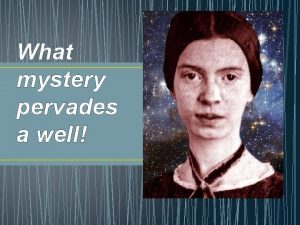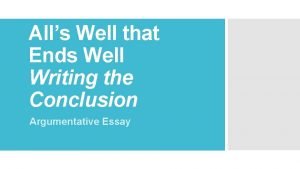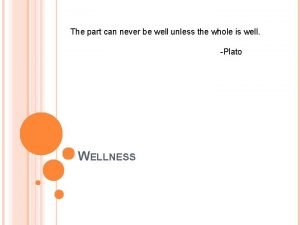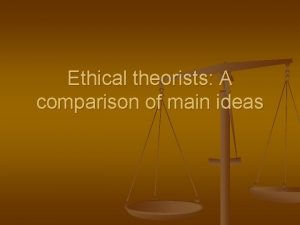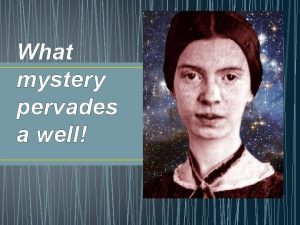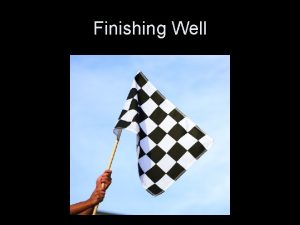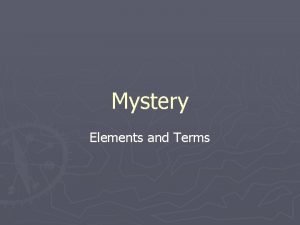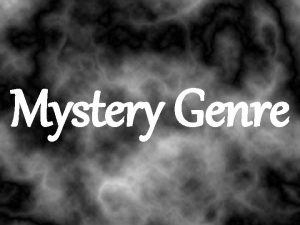What mystery pervades a well What mystery pervades








- Slides: 8

What mystery pervades a well!

What mystery pervades a well! That water lives so far – A neighbor from another world Residing in a jar Whose limit none has ever seen, But just his lid of glass – Like looking every time you please In an abyss's face! The grass does not appear afraid, I often wonder he Can stand so close and look so bold At what is awe to me. be, The sedge stands near the sea – Where he is floorless And does no timidity betray But nature is a stranger yet: The ones that cite her most Have never passed her haunted house, Nor simplified her ghost. To pity those that know her not Is helped by the regret That those who know her, know her less The nearer her they get.

Main theme - Awe inspired by nature • The poem reflects ED’s recurring concern for nature, and humanity’s interaction with it. • The metonyms “water” (in a well), “grass”, “sedge”, “sea” (why these metonyms? ; why these signs? ) are ‘parts’ representing the ‘whole’. • The domesticated image of the first stanza: “neighbour … residing in a jar” disintegrates by the poem’s close (“nature is a stranger

Some observations • Form: oft used iambic tetrameter / trimeter; ABCB rhyming scheme. • BUT: the unsettling effect of some lines: stanza 2; stanza 4. • Stanza 4 as disjunct • Inverted rhythm in lines 3 -4; the caesura in line 3; the leftover syllable in “be-tray”. Creates a mimetic effect (the ‘waves’ motion: sibilance, elongated vowels / affricative consonants – remember that poetry is sound) that segues into stanza 5: “stranger”, “haunted”, “sinister” = sinister imagery that dissociates nature and the reader (contrast with stanza 1).

Some observations • The aphorism of the final stanza. • ED’s philosophy of nature: the poem is dated 1877. In 1876 she wrote to critic and writer Thomas Higginson: “Nature is a Haunted House - but Art - a House that tries to be haunted. ” …What does she mean by this? • The influence of ‘Romantic’ sentiment. Sublimating / deifying nature.

Some observations • ED’s personal links to ‘botany’. She spent much time in her ‘herbarium’, extensive garden and conservatory. She stated: “I have four studies. They are Mental Philosophy, Geology, Latin, and Botany. • Syntax ‘periodic’ / ‘hypotactic’ ? ? (Mrs Lack: “help”)

Some observations • Mid-century proto-ecology in New England. By 1850 Massachusetts had consumed 60% of their forests. Conservation ideas were reported as ‘pioneered’ in New England. “One would think by this time, when the forest has fallen in all the valleys – when the hills are becoming more bare every day … some forethought and care in this respect would be natural in people laying claim to common sense. ” (Susan Fenimore Cooper, Rural Hours, 1850) …would ED be interested in such agendas?

Poem 572 • The day came slow, till five o'clock, Then sprang before the hills, Like hindered rubies, or the light, A sudden musket spills. The purple could not keep the east. The sunrise shook from fold. Like breadths of topaz, packed a night, The lady just unrolled. The happy winds their timbrels took; The birds in docile rows, Arranged themselves around their prince. (The wind is prince of those. ) The orchard sparkled like a Jew, --How mighty 'twas to stay, A guest in this stupendous place, The parlor of the day.
